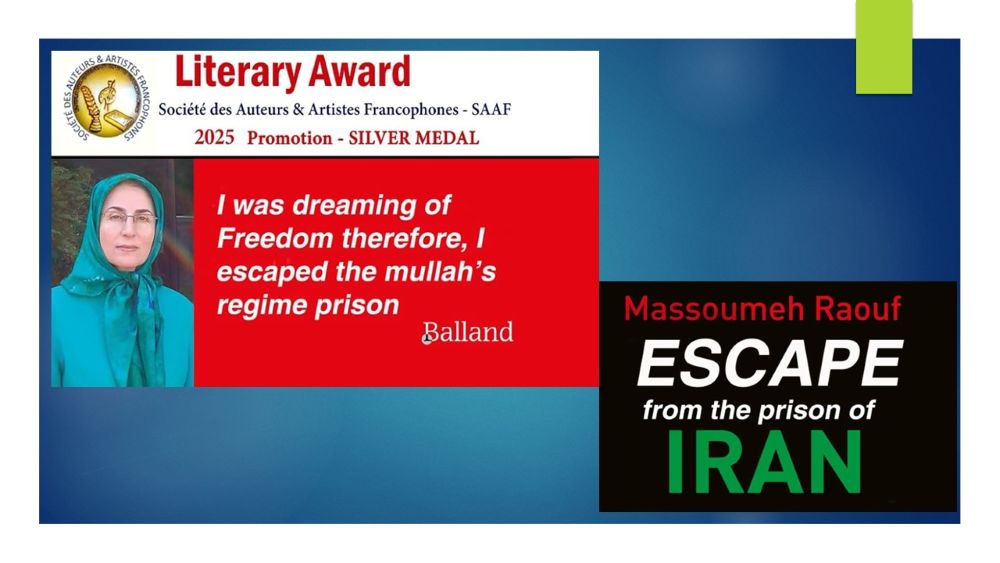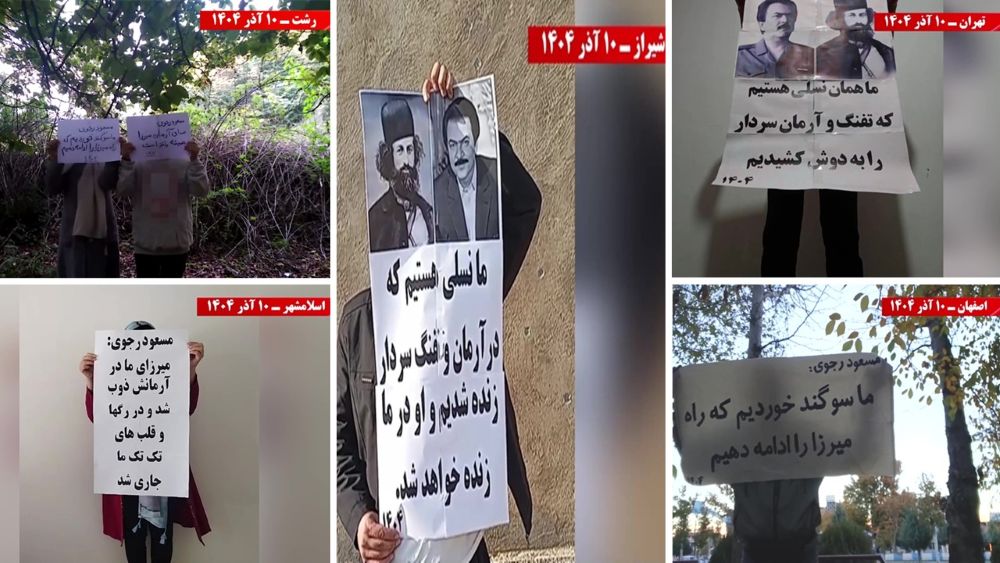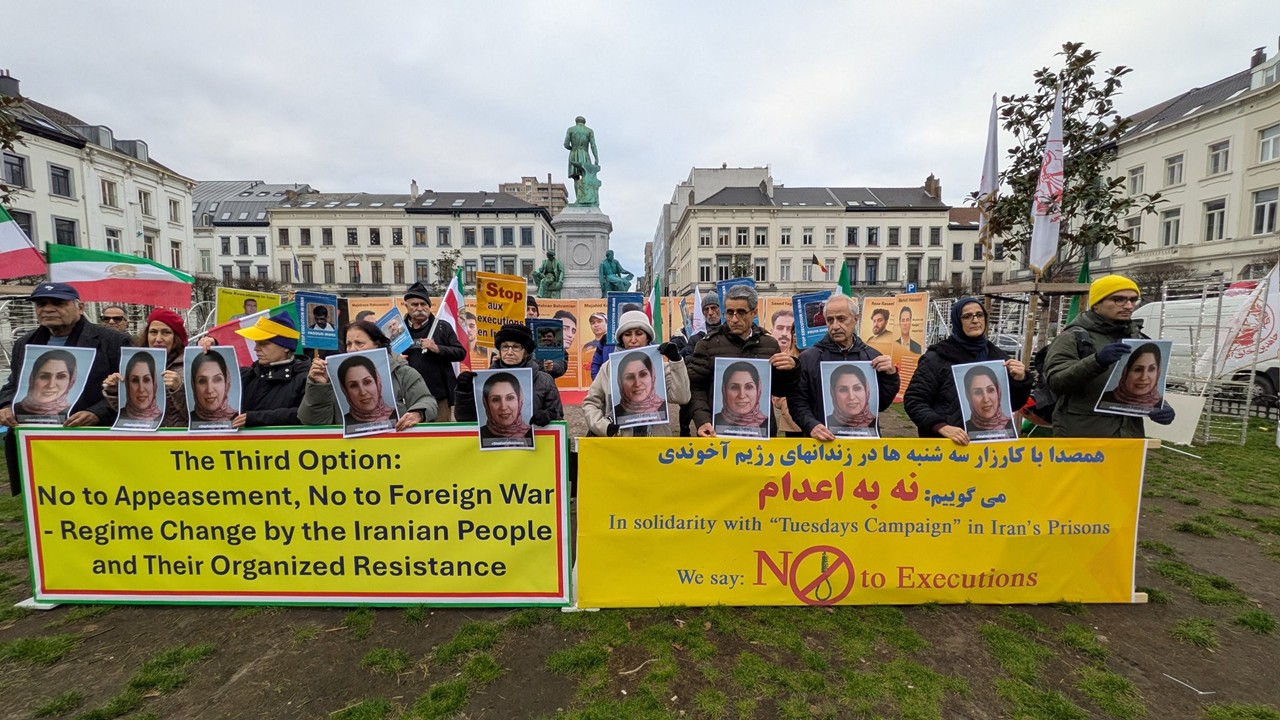Photo Exhibition and Rally on the U.S. Capitol Hill Grounds – 1988 MASSACRE IN IRAN, A Call for Justice and Accountability
A photo exhibit held by the Organization of Iranian-American Communities bringing to life four decades of the Iranian regime’s horrific human rights violations—Washington, DC—September 4, 2020
𝐖𝐀𝐓𝐂𝐇 Iran Event 𝐋𝐈𝐕𝐄:
— OIAC: Organization of Iranian American Communities (@OrgIAC) September 1, 2020
𝟐𝟎𝟐𝟎 𝐇𝐮𝐦𝐚𝐧 𝐑𝐢𝐠𝐡𝐭𝐬 & 𝐓𝐞𝐫𝐫𝐨𝐫𝐢𝐬𝐦 𝐏𝐡𝐨𝐭𝐨 𝐄𝐱𝐡𝐢𝐛𝐢𝐭𝐢𝐨𝐧,
120,000 Fallen for Freedom.
𝐅𝐫𝐢𝐝𝐚𝐲, 𝐒𝐞𝐩𝐭 𝟒.
𝟏:𝟎𝟎 𝐩𝐦 (𝐄𝐃𝐓)#DisbandIRGC #1988Massacre #NoImpunity4Mullahshttps://t.co/9pyF2wtdEx
A photo exhibit held by the Organization of Iranian-American Communities bringing to life four decades of the Iranian regime’s horrific human rights violations—Washington, DC—September 4, 2020
The Organization of Iranian-American Communities (OIAC) held a large photo exhibition on Friday, September 4 in Washington, DC, highlighting four decades of systemic violations of human rights in Iran, especially the 1988 massacre of 30,000 political prisoners, the November 2019 murdering of 1,500 protesters, and the assassination of dozens of political dissidents abroad.

Thousands of photos and graphics brought to life the stories of the genocidal regime’s atrocities and their victims. DC-area families of the victims of these atrocious crimes were present next to the display of their loved ones telling their heart-breaking stories. The event was broadcast online through a variety of social media platforms linking people from across the globe.
Remarks were also provided by survivors of these atrocities, as well as members of the U.S. Congress and political dignitaries. The event also called on the international community to take immediate action to save Navid Afkari, an Iranian wrestler who has been sentenced to death for taking part in popular protests two years ago.
Maryam Rajavi, President-elect of the National Council of Resistance of Iran (NCRI)
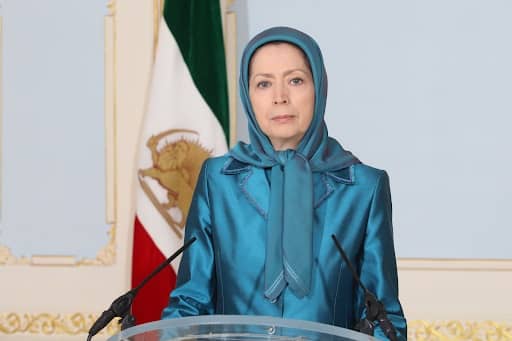
“Holding this exhibition is particularly inspiring and effective on the 32nd anniversary of the massacre of 30,000 political prisoners in Iran in 1988,” said Maryam Rajavi, President-elect of the National Council of Resistance of Iran (NCRI). “Nonetheless, it depicts only a small part of the crimes and terrorism committed by the ruling religious fascist regime. One of the most horrific cases committed by the clerical regime was the massacre of political prisoners in 1988,” Madam Rajavi added.
“In the past 32 years, the Iranian Resistance has persistently called for the masterminds and perpetrators of this great crime against humanity to be held accountable,” Madam Rajavi continued, reminding that due to the Western policy of appeasing the ruling religious tyranny, those who ordered and perpetrated this crime, namely the regime’s most senior leaders, have so far evaded facing justice. Some of these figures include Ebrahim Raisi, the regime’s judiciary chief, and Alireza Avayi, the current Justice Minister, who were members of the death commissions during the 1988 massacre.
“And now, more than three decades later, the blood of the victims of the 1988 massacre is roaring across Iran and inspiring young people,” she continued.
Madam Rajavi reiterated that the regime’s crimes continue to this day. “The savage execution of Mostafa Salehi and the Judiciary’s ruthless decrees for the execution of detained protesters, indicate the desperation of a regime on its last legs. The criminal verdicts for Navid Afkari, a young wrestler, and his two brothers, and for other prisoners who are among the country’s most enlightened youths attest to the regime’s panic and fragility.
“I have continually called on the international community to condemn the clerical regime and to take urgent action to stop the executions. I urge you to persistently follow up on this to prevent these inhuman verdicts from being carried out against Iran’s young generation.”
Madam Rajavi also reminded the audience that in tandem with its human rights abuses, the regime has resorted to terrorism and demonization against the opposition. “Over the past 40 years, in addition to suppression, the mullahs have been targeting the PMOI/MEK and the Iranian Resistance every day with their slanders and lies in an extensive and expensive demonization campaign. The flip side of the demonization campaign is the mullahs’ unbridled terrorism, the sharp edge of which is directed against Iranian dissidents, specifically the PMOI/MEK and the Iranian Resistance,” she said.
Madam Rajavi stressed that the key to stopping the Iranian regime’s crimes is to hold it to account for its terrorism and human rights abuses. “The time has come for the closure of the Iranian regime’s embassies which serve as centers for terrorist operations. The clerical regime’s leaders must also be held accountable and punished for their crimes.
“The experience of the past 40 years has shown that no amount of political and economic concessions will change the behavior of the mullahs’ regime.
“The international community must, therefore, adopt a firm policy and apply maximum pressure on the regime, including referring its human rights record to the UN Security Council. It must also implement the six UN Security Council resolutions and stand with the people of Iran and their organized Resistance.”
Dr. Raheleh Sadeghpour, sister of a 1988 massacre victim

I’m the sister of Hamid Sadeghpour, my brother. He was one of the smartest students in his high school. He was a supporter of the MEK. He was very active with the movement. In July 1981, he was arrested for supporting the MEK. He spent seven years in prison.
The regime severely tortured my brother. They drove nails into his feet. But he always had his smile when we went to meet him. That is the person he was.
One day, after waiting a long time to meet him, my mother was told Hamid was not in prison. Finally, after extensive search, they learned that he was transferred to Evin and after that to Gohardasht prison.
After he endured seven years in prison and torture chambers, he was killed by the regime.
Another story is that of Ameneh Afzali, my dear friend. At the time of her execution, she was 17 years old. In the summer of 1981, she was severely tortured in prison because of her affiliation with MEK. But she did not give in. They shot her and threw her bullet-ridden body into a ditch, where she bled to death.
We would be chased in the streets by the Revolutionary Guards (IRGC). We were beaten with the stocks of machine guns. They took us to IRGC headquarters. We were taken to a large, dark room. The room was so crowded that we all had to stand. My friend Maryam was sentenced to 70 lashes. I could hear her screams.
Four decades later, those sacrifices have inspired a new generation. We saw that in the protests of November 2019. The movement for freedom in Iran is growing. It has spread across Iran and includes all sectors of the society.
The stories of torture, execution, beheading, severing of limbs, these stories are endless. But that is not where this story ends. The awe-inspiring resistance to say no to the mullahs, to never give in, that writes the rest of the history of Iran and Iranians.
Gholam Torshizi, brother to three 1988 massacre victims
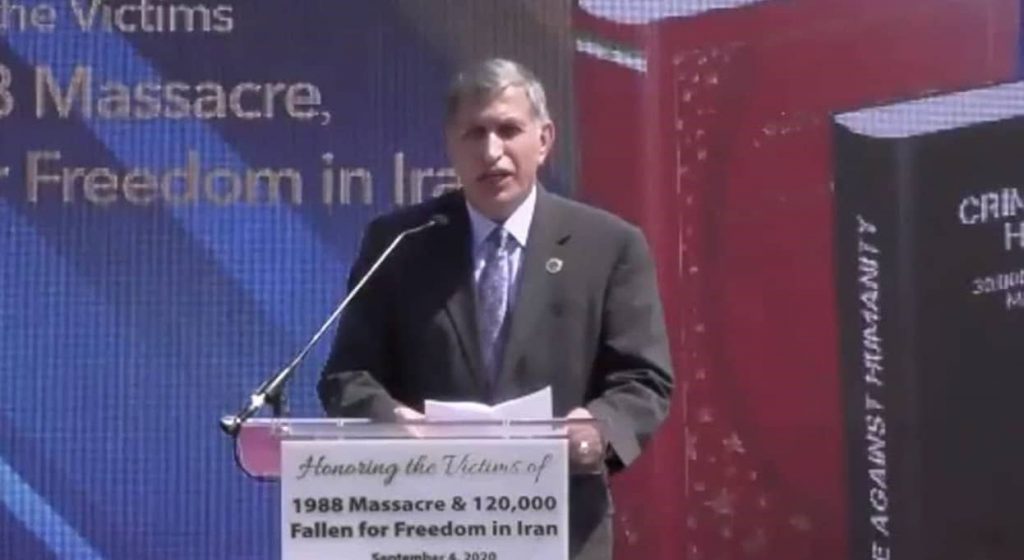
I am the only survivor of four brothers. Three of my brothers have been executed by the regime. The regime must be held to account.
My younger brother Behrooz was very gifted and talented. He was a supporter of the MEK when he was studying in college. In 1981, one day he left home and we never saw him again. We searched for him for 17 days. Finally, we found out about his fate in the newspaper Keyhan among the names of others executed. The news was a shock to our family.
My father reached out to the inspector general’s office. The cleric told my father, ‘your son had a camera and was taking pictures of an MEK demonstration.’
These criminals are still in charge, the same people who killed my brother. They sentenced him to death without access to a lawyer. They tortured him for 17 days, killed him, and buried him in the Behesht-e Zahra Cemetery without telling my family.
My other brother, Bahman, was also a supporter of the MEK. He disappeared in January 1982. We never found him.
My third brother Reza was a swimming champion and a member of the MEK. After Bahman’s disappearance, Reza went into hiding with my mother. They both disappeared. My father started searching for my mother and two brothers.
My mother came back after a month and told us that Bahman was killed by the IRGC. My other brother was arrested with my mother and taken to Evin prison. We later learned that Reza was sentenced to seven years in prison and later taken to Ghezel Hesar prison of Karaj, located west of the Iranian capital Tehran.
In 1988 Reza’s seven-year sentence was over. My father reached out to the inspector general’s office to ask why Reza was not released. They said he had not repented. Reza later told my father that those who repent are asked to kill those who have not repented. ‘I cannot do that,’ he said.
One day, my father was summoned to the prison. He thought his son was released. But instead, they informed him that Reza was executed and they gave him a bag with his belongings.
I am proud of my brothers and all the martyrs who have sacrificed their lives for freedom. They are the true face of Iran, the face of the resistance.
Today I’m asking the world community to stop talking with the mullahs. Their hands are soaked with the blood of innocents. The time has come for criminals like Khamenei to be arrested for their crimes.
Stand beside the Iranian people’s resistance movement.
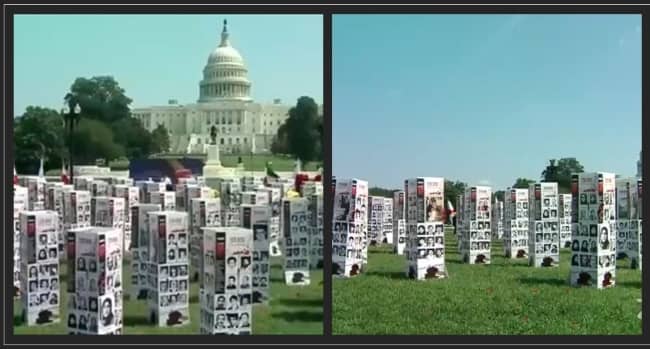
Amb. Lincoln Bloomfield, former U.S. Assistant Secretary of State for Political-Military Affairs

Why are we talking about an event that took place 32 years ago? The massacre of the political prisoners of Iran in 1988 was one of the worst crimes in the post-World War II era. The regime lied to the world. But the truth has come out.
We know that the people who sent these political prisoners to their death are still in power today. We have the proof and we have those who are culpable.
This was a pivotal moment in Iran’s history. We must know who were these people who were killed? In America, we’ve heard about MEk for many years. We were told they are terrorists, Marxists, a cult, whatever. But this is what the regime told us.
After the revolution, MEK activists held rallies and called for political and social rights. This was unacceptable for the Khomeini regime. On June 20, 1981, Khomeini began a reign of terror. Even boys and girls were arrested for political activities. They were sent to jail, tortured and murdered.
In 1988, Khomeini ordered the annihilation of the MEK prisoners. Many had completed their sentences. The prisoners were asked whether they were still loyal to their views. They were proud people and said they still believed in their views. They were killed by the dozens, they were hung, machine gunned, wrapped up and buried in mass graves where they couldn’t be found. Their possessions were delivered to the homes of their families and the families were told their loved ones were killed.
After Khamenei became supreme leader, he resorted to assassinations and terrorism abroad. For thirty years, Iran has been the number one state-sponsor of terrorism.
We are here to make sure the prisoners are remembered. We cannot ignore 1988 anymore. This was one of the largest crimes against humanity. The United States and some of its allies don’t always agree on policies toward Iran. But they don’t disagree on Iran’s human rights violations.
The people who sent these political prisoners to their deaths must be held to account. I call upon my government and other governments to act now.
They must stop these extrajudicial killings. They have sentenced Iranian wrestler Navid Afkari to death and his brothers to decades in prison for standing in protests. These are brave people, ladies and gentlemen. Let’s stand with them.
Rep. Steve Cohen (D-Tennessee)
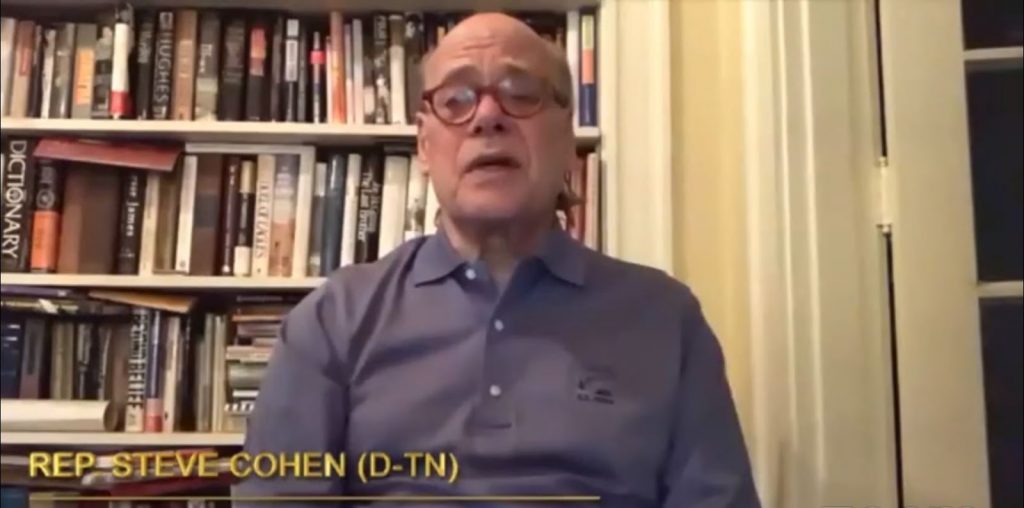
What went on in 1988 must be remembered. What’s going on in Iran is still horrific. The actions of the government have been repression against the people’s rights. It’s more important than ever to remember the victims of the 1988 massacre. We must have a free Iran.
Rep. Angie Craig (D-Minnesota)
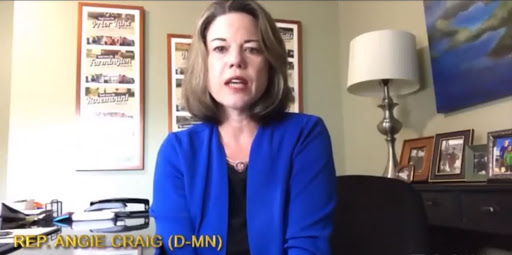
I join you to condemn the 1988 massacre. I join the thousands who raise their voices to call justice for the victims. We both have a history of disavowing the terrorism of the regime against the people of Iran. I will continue to support you.
Rep. Debbie Lesko (R-Arizona)
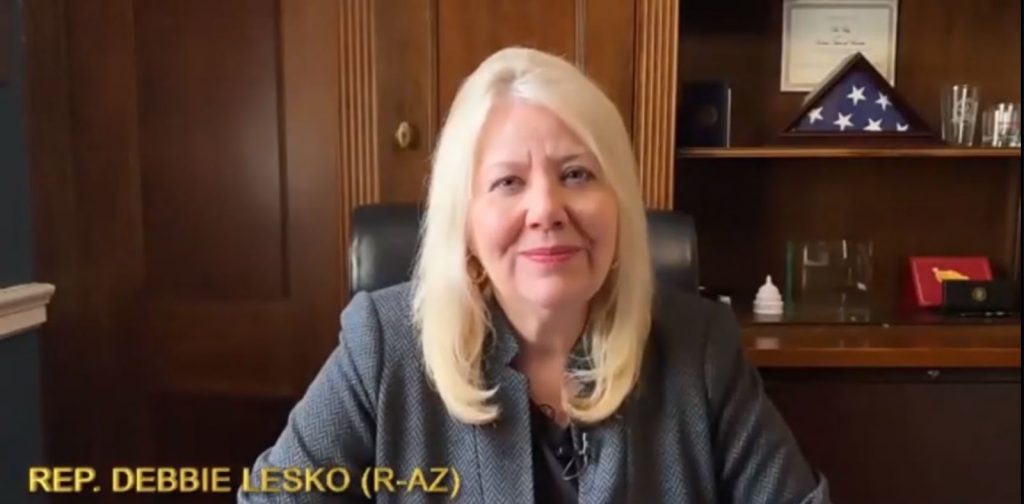
My thoughts and prayers are with those who knew people or had relatives killed in the 1988 massacre. I’m a co-sponsor of the house resolution that condemns the regime and calls for a non-nculear Iran.
I appreciate what you’re doing and stand with you to support your mission.
Rep. John Katko (R-New York)

The Iranian regime has continued its campaign of terror at home and abroad. They regularly target Iranians who call out their rights abuses. The Iranian regime is the biggest state-sponsor of terrorism.
It spends 1 billion dollars to fund proxies to spread terrorism. Last year they killed more than a thousand protesters who raised their voices. We stand with you.
Rep. Raja Krishnamoorthi (D-Illinois)

Together, we need to support the ongoing fight for human rights in Iran and speak the truth of the past, including the mass executions of thousands of political prisoners in 1988. This slaughter was carried out under the order of Khomeini.
I’m proud to join you in speaking out against these human rights violations and any attempt to deny the truth.
Patrick Kennedy, former member of the U.S. House of Representatives

It’s important that we remember who we are dealing with, the mullahs in Iran, and we recognize that things really have not changed. The massacres have continued. We saw it last year in the uprisings, and all those young people killed in Iran’s streets.
We continue to see this in attacks and assassination attempts abroad. We have come to expect this from the fascist dictator to Iran. This is a sad state of affairs that the world has become accustomed to Iran’s violent behavior.
The mullahs promised a revolution and instead delivered a dictatorship that has terrorized people. MEK members have been on the front lines. They have been the chief target of the Iranian regime. There is no question as to why the regime continues to target MEK members. THey know the MEK is organized, that they stand for a platform, that Maryam Rajavi’s ten-point plan challenges who the mullahs are.
We remember those MEK members who laid down their lives, the scores of members who were attacked and killed in Camp Ashraf and Camp Liberty.
There has been no doubt that the Iranian government pursues the MEK wherever they go because they have a tremendous message. Once Iranians get to see how many of their countrymen are frustrated about how their country is being run, it is no surprise that the people of Iran are protesting.
The mullahs ahve no respect and they continue to torture and imprison and execute. THey are the number one country of the world for the percentage of people they execute. Any government that does that to their own people has no legitimacy whatsoever.
Milad Hosseini
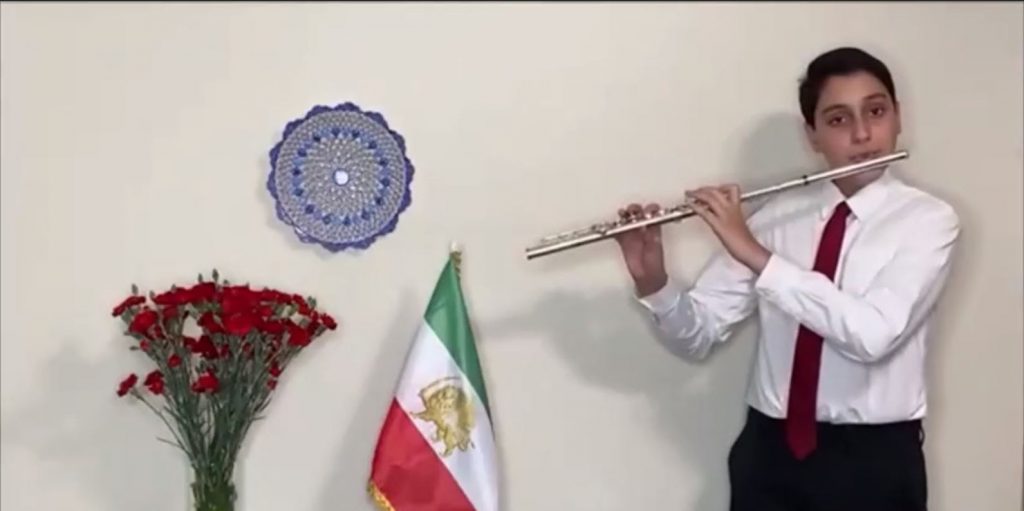
This is dedicated to the people who sacrificed their lives to fight the darkness of tyranny.
Kenneth Blackwell, former U.S. Ambassador to the United Nations Human Rights Commission

In 1988, 30,000 political prisoners were victims of summary executions by the regime of Iran. We must be that alarm clock for justice. We must be protectors of human dignity everywhere. We can’t be on the ground in Iran. But we can do what we can where we are.
Our world depends on it. Those who were the victims of that gross injustice against humanity are witnesses of how we run the race in our time. Let’s continue to speak up and demand justice is done.
Bruce McColm, former Executive Director of Freedom House
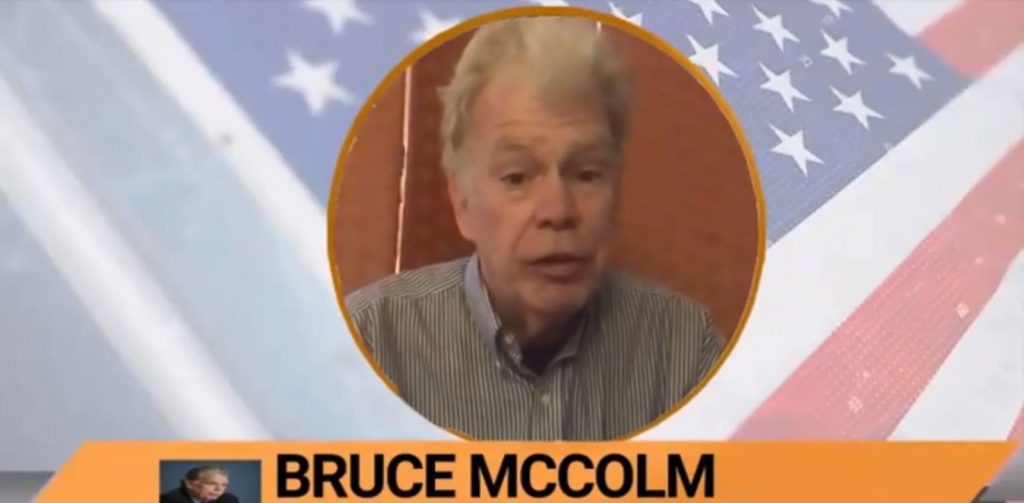
I knew Kazem Rajavi. He belongs in the human rights Hall of Fame. He was assassinated thirty years ago by Ayatollah Khamenei. He was the first representative of the Revolutionary Iran in the UN. He resigned because of arbitrary arrests and execution in his country. He was very active in defending human rights in Iran.
They killed him in his driveway in his home in Geneva. We had a memorial for Kazem at the UN headquarters in New York.
We have to remember Kazem spent his career in human rights. He was an extraordinary man, very humble, very accessible. He had six PhDs, an incredible person. We remember him and all those fallen for freedom.
Many of the same people who were the culprits in these incidents are still around, they’re still alive and still have blood on their hands. Kazem was a great aristocrat of freedom, someone who was born with the urge to have his people free.

